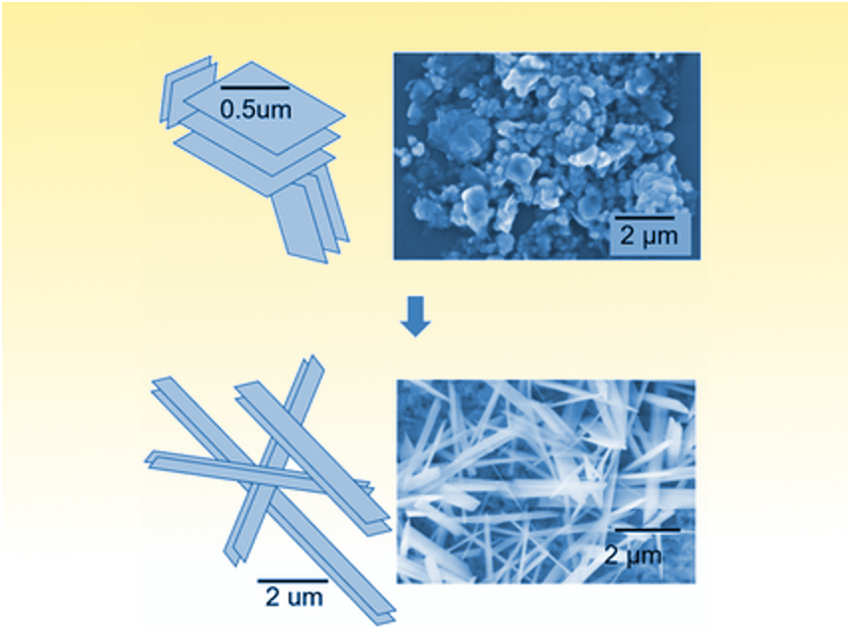One-dimensional materials, such as nanorods, have useful electronic and mechanical properties for different electronic devices. Creating 1D nanorods from electrical conductive 2D materials such as graphene or transition-metal dichalcogenides (TMDCs) is particularly interesting. However, this approach has not been widely implemented due to the optical opacity of these materials.
Kevin P. Musselman, University of Waterloo, Canada, and colleagues have converted 2D materials into 1D nanostructures while improving their optical transparency. The researchers used a femtosecond laser to irradiate tungsten disulfide, molybdenum disulfide, graphene, or boron nitride solutions. The materials grew into nanorod and nanotube structures.
The pulsed laser fragments the 2D materials and then directs their growth into 1D structures up to several micrometers in length. The structure is caused by the laser’s linear electric field: The fragments are aligned in the beam focus of the laser, and the nanorods are then formed by the reassembly of the fragmented nanoparticles. The produced tungsten disulfide (WS2) nanorods have both high electrical conductivity and high optical transparency, meaning that they could be used as transparent conductors.
- Laser‐Directed Assembly of Nanorods of 2D Materials,
Khaled Ibrahim, Inna Novodchuk, Kissan Mistry, Michael Singh, Christopher Ling, Joseph Sanderson, Michal Bajcsy, Mustafa Yavuz, Kevin P. Musselman,
Small 2019.
https://doi.org/10.1002/smll.201904415

![Synthesis of [c2]Daisy Chains via Mechanochemistry](https://www.chemistryviews.org/wp-content/uploads/2025/04/202504_RotaxanesWithSolidStateMechanochemistry-125x94.png)

